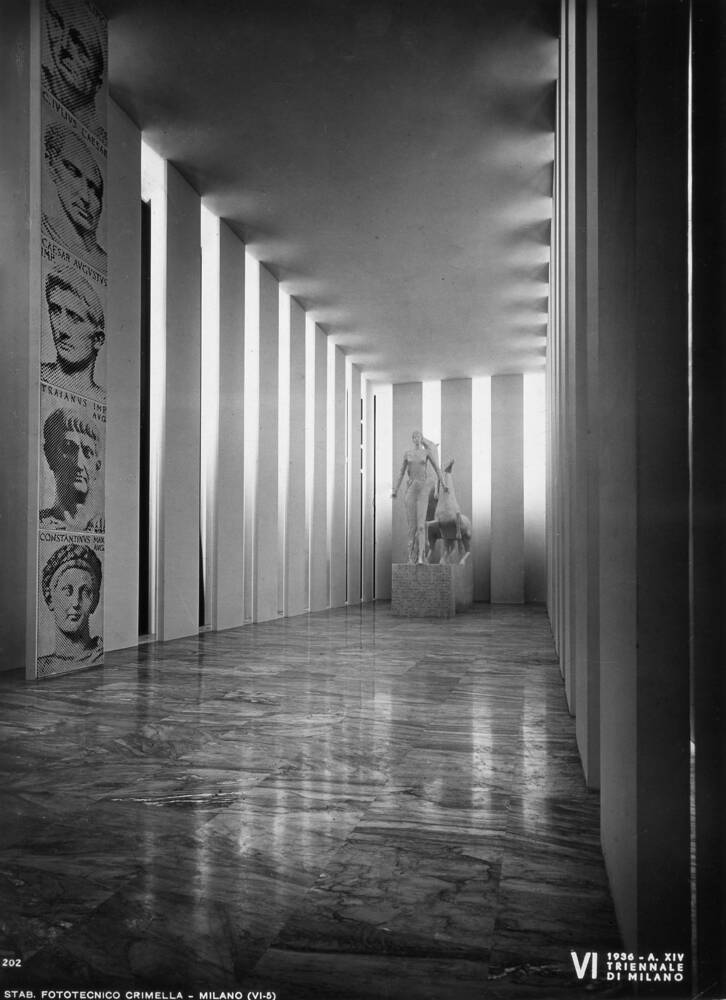In 1936, for example, Fontana created the monumental sculptural group 'Vittoria' for the Hall of Fame at the VI Triennale in Milan: a five-metre-high goddess of victory followed by two rearing horses. It is part of a spatial installation created in collaboration with the critic and designer Edoardo Persico (1900-1936), the architect Giancarlo Palanti (1906-1977) and the painter Marcello Nizzoli (1887-1969). With its forced verticality, echoed by Fontana's elongated figures in white plaster, and sophisticated lighting effects, it was designed to offer the public a spatial experience that went beyond the purely material. In this respect, the project was of great importance for the further development of Fontana's work.
On the other hand, Fontana's 'Vittoria' fits in with Fascist propaganda. Depictions of Victoria, the Roman goddess of victory, were part of the official imagery of the party and the government, designed to legitimise their power, mobilise the population and promote national pride.
Fontana, Persico, Palanti and Nizzoli's project for the Hall of Fame is set in the historical context of the Abyssinian War (1935-1936), a war of aggression in violation of international law waged by Fascist Italy to expand its colonial empire in Africa. It was the first war of aggression by a fascist regime and the greatest international crisis since the end of the First World War. The former Empire of Abyssinia, now Ethiopia, was one of the few independent African states to join the League of Nations - the forerunner of the United Nations - in 1923.
The VI. Milan Triennial opened on 31 May 1936, just a few weeks after the fall of the Abyssinian capital Addis Abeba and the proclamation of the Italian Empire on 9 May. This event also allowed Italy to celebrate its victory in the war. The Hall of Fame was subsequently renamed the Hall of Victory.
A martial inscription, taken from Mussolini's speech on the conquest of Addis Abeba, celebrating the fighting spirit of the Italian people, was also added to the base of Fontana's 'Vittoria'. Following a visit to the Triennale in July 1936, the Deputy Minister of Press and Propaganda, Dino Alfieri, commissioned Lucio Fontana to produce his 'Vittoria', which was intended to be temporary, as a bronze cast to be erected in a square in Addis Abeba. Fontana proudly told his father about the commission. It was never realised.


